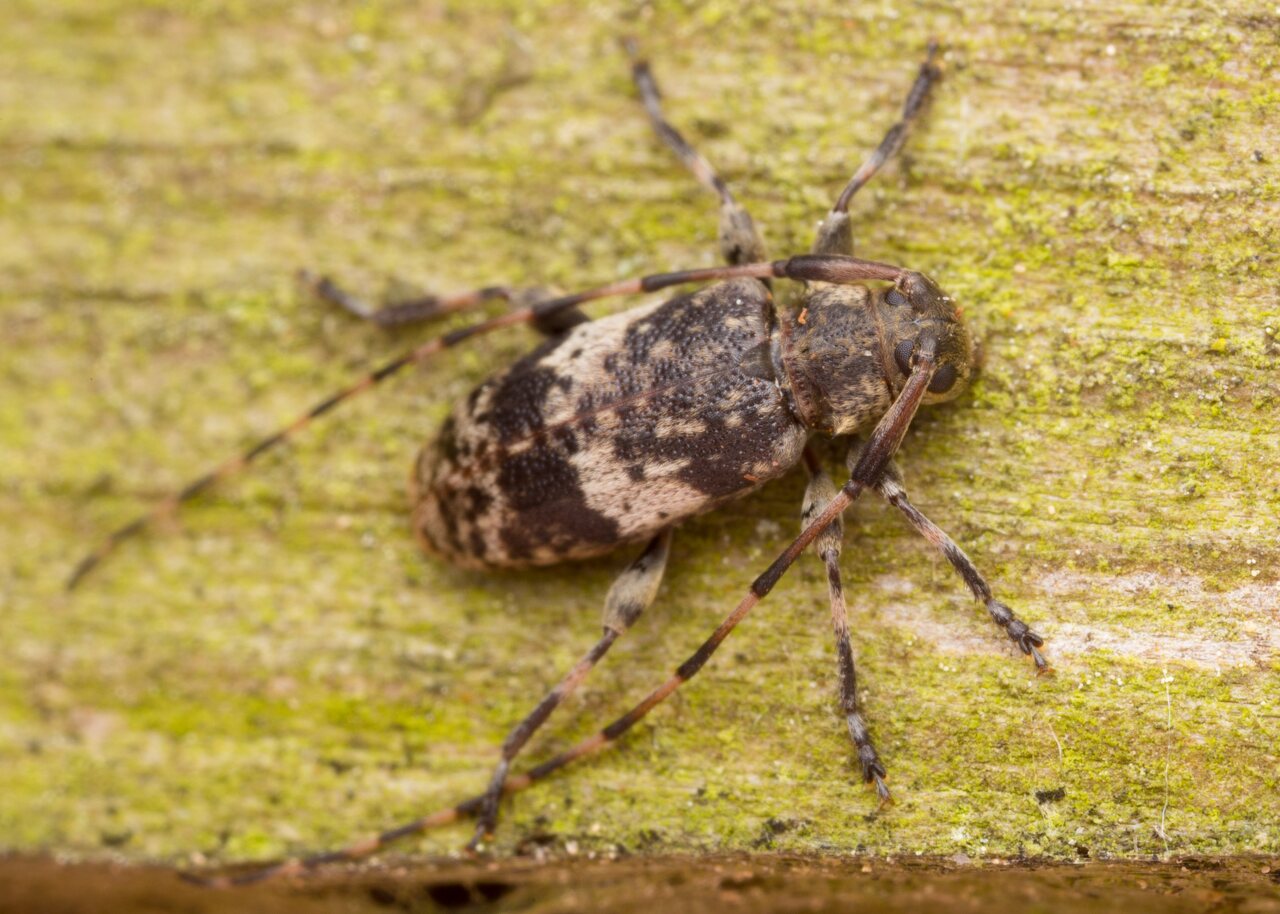
Leiopus nebulosus agg. · juostuotasis margūnas
- Black-clouded Longhorn Beetle
- Braungrauer Splintbock, Nebelfleckbock, Braungrauer Laubholzbock
- juostuotasis margūnas
- capoń mglisty, capoń bukowiec
In recent years Leiopus nebulosus has been split into two sibling species - namely Leiopus nebulosus and Leiopus linnei, which are best separated by examination of the genitalia.
They are widely polyphagous and have been recorded breeding in more than twenty species on decidiuos trees and shrubs as well as various conifers such as pine and various spruces. Unlike many longhorn species it does not visit flowers although adults are diurnal and often fly during warm sunny days, otherwise they are rather inconspicuous and remain on trunks or fallen timber where they are cryptic and will need to be searched for carefully. Mating occurs throughout the season and females oviposit during the day among the bark or in fissures close to bark on dead or decaying trunks, stumps or fallen timber, and often on quite slender branches. Larvae develop under bark, producing longitudinal galleries that only superficially enter the xylem, and most are fully grown after the first winter, they construct an elongate and flat cell under the bark from wood fragments and pupate during March or April and adults eclose within a few weeks but they do not emerge from the wood until late in May.
sensu lato, čia gali būti L. linnei. Galėjau ir L. femoratus pripainioti. Kūnas 6-10 mm ilgio, juodas, apaugęs pilšvais ir tamsiai rudais plaukeliais. Antsparniai su dviem skersiniais raiščiais, kurių tarpas apaugęs gelsvais plaukeliais. Patinų antenos 1,5 karto ilgesnės už kūną, patelių kiek trumpesnės. Gyvenimo ciklas trunka nuo metų iki dviejų. Vabalai skraido pavasarį ir vasarą. Sugaunami ant lapuočių medžių rąstų ar sausų šakų. Lervos vystosi po džiūstančių lapuočių medžių šakų ir kamienų žieve. Paplitęs Europa, Rusijoje ir Kaukaze.
Subfamily: Lamiinae · niūrūnėnai
‥
0 comments
Add a comment